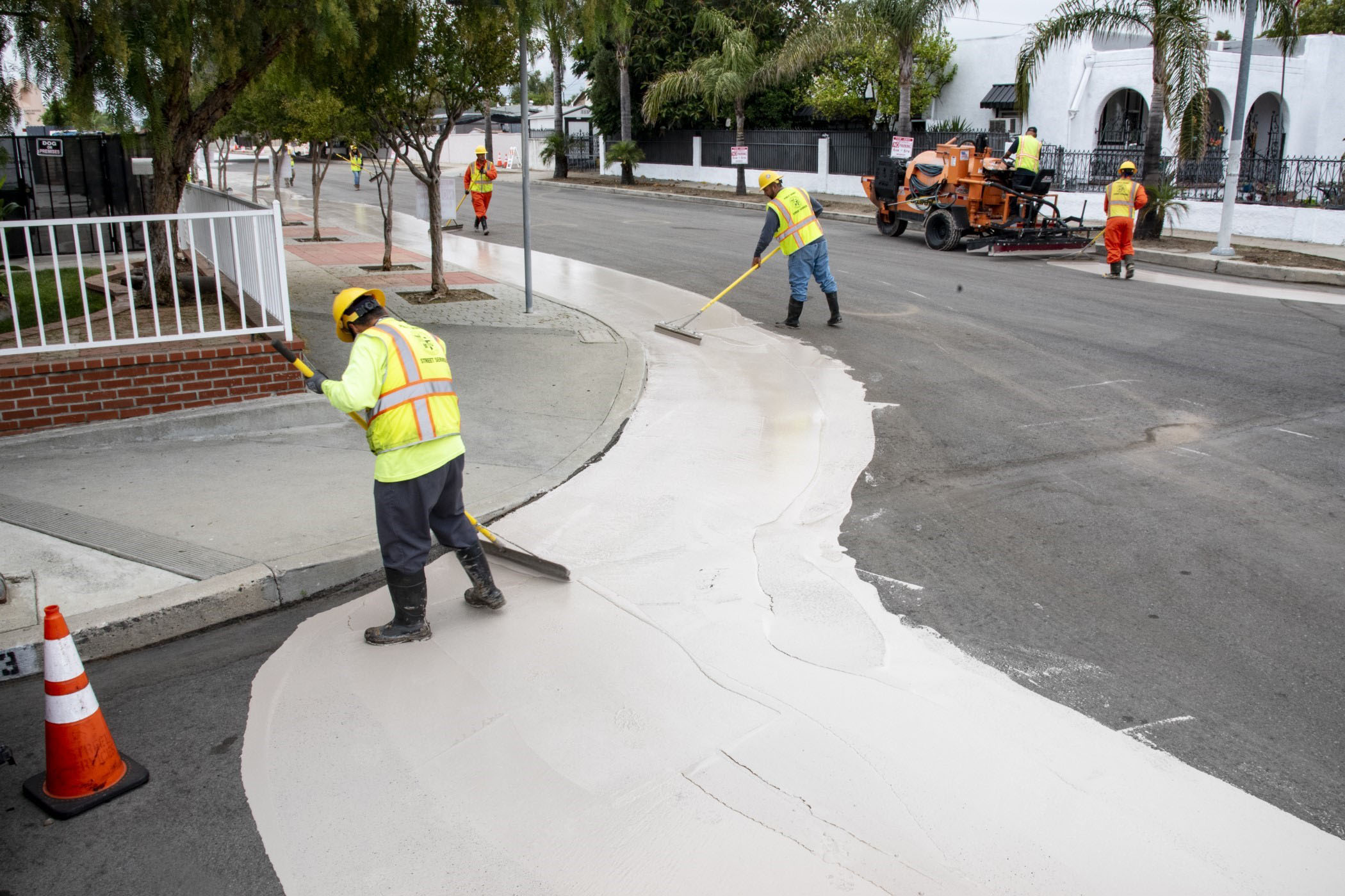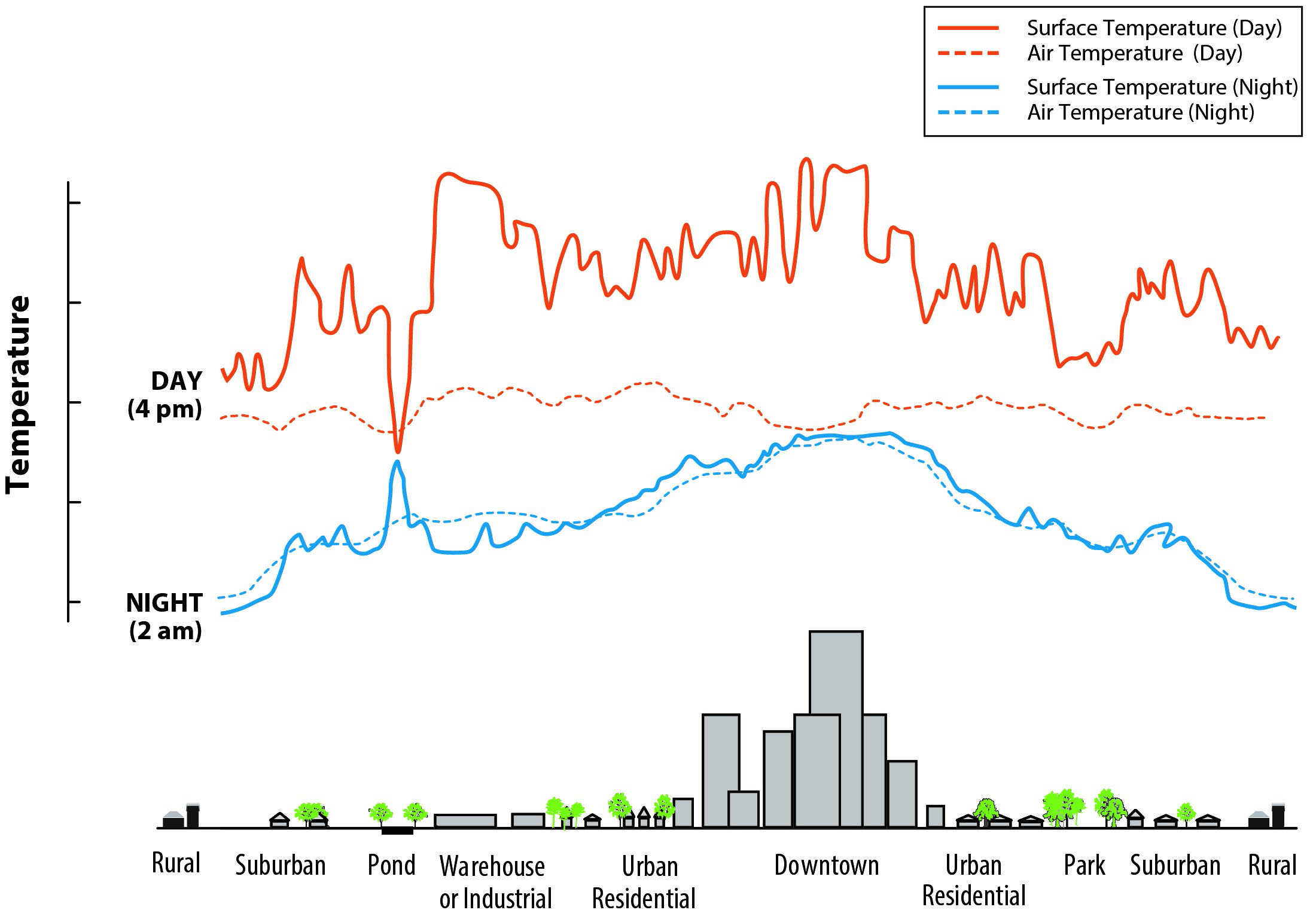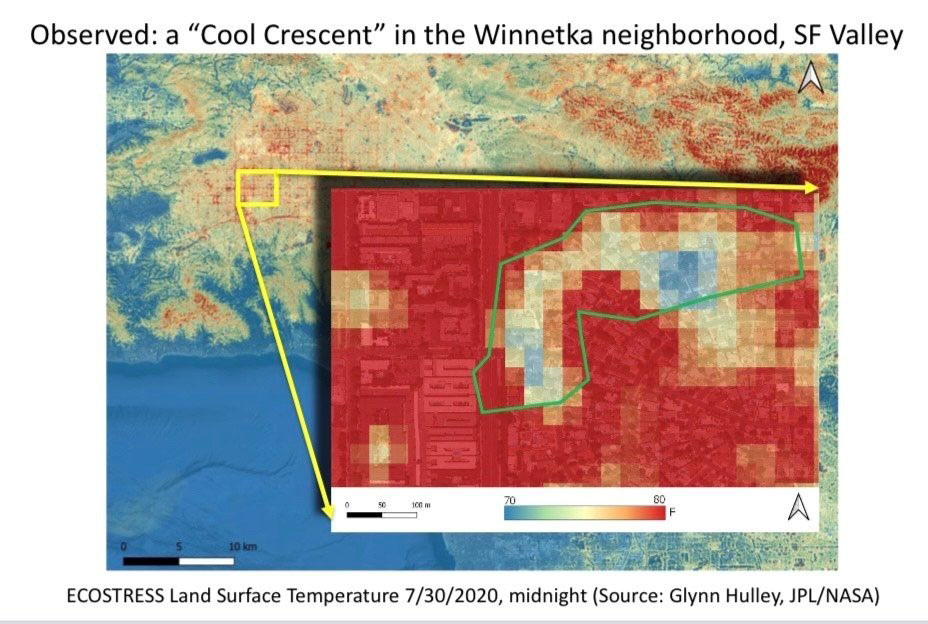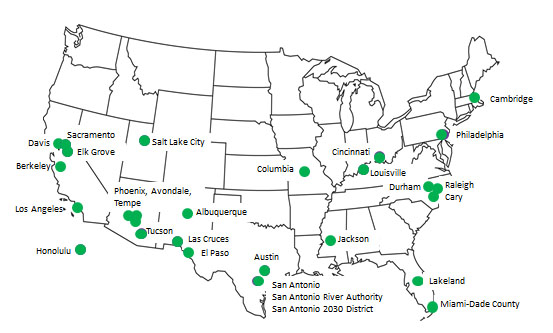
You’ve probably heard that black cars get hotter than white cars.
Scientists set out to measure the difference. They parked two otherwise identical cars in a sunny parking lot, and, sure enough, the white car’s interior stayed 17 degrees Fahrenheit cooler.
Urban planners hope to use the same principle to cool cites, where miles of black asphalt and dark colored roofs absorb the sun’s heat, amplifying daytime temperatures, then radiate the heat through the night.
The famous white villages of Spain have addressed this issue for centuries—by painting everything white.
Today’s scientists are going a step further, creating super white paint, which could be used on buildings and rooftops.
Standard white paint reflects 80 to 90 percent of visible light. This new paint uses calcium carbonate, or chalk, as a whitener and reflects 95 percent, cooling the surface temperature by 3 degrees Fahrenheit.
An even more experimental paint uses barium sulfide. It reflects 98 percent of visible light and cools the surface by 8 degrees!
If painted on a 1,000 square foot surface, it has more cooling power than a residential air conditioning system—yet requires no electricity.
These paints are currently expensive, rare and fragile. But if perfected in the future, a simple coat of paint could lower the temperatures in cities. Now that’s cool!
Background
Synopsis: Keeping cool may be on your mind this summer. Something as simple as color can make a big difference—white cars may be more than 15°F (8°C) cooler than black cars after a few hours in the sun. City planners are taking advantage of these simple physical principals by applying white paint to roofs and roads in urban heat islands, where dark colored infrastructure can increase temperatures by up to 7°F (4°C). Scientists have now developed special super white paints that reflect more than 98% of incident sunlight.
- White objects reflect all wavelengths of visible light simultaneously, while black objects absorb these wavelengths.
- Although artists might describe white and black as colors, physicists describe them as visual experiences.
- Absorption of sunlight warms dark objects, and lighter items reflect sunlight, staying cooler.
- Identical cars left out in the sun illustrate this principal very clearly. In a recent experiment, the interior of a black car heated up to 130°F, but its white twin only heated up to 113°F.
- On a hot sunny day, a dark shirt will overheat you, while a white shirt will keep you more comfortable.
- Snow is the most reflective natural material on earth, bouncing 80–90% of sunlight that falls on it back into space, keeping snowy areas extra cool. Snow is whiter than ice, which only reflects 15–35% of sunlight.
- As summers get warmer, cities are heating up even faster than the countryside.
- Air conditioning systems inject heat into the atmosphere.
- Dark colored infrastructure like buildings and roads absorb more heat than natural landscapes or light colored surfaces.
- Later, city infrastructure reemits the heat, producing what are known as urban heat islands that are warmer both during the day and night.

- The urban heat island effect scorches cities, putting the comfort and health of urban residents at risk, so city planners have begun employing simple strategies to offset absorption of heat.
- Increasing tree cover and vegetation provides the cooling effects of both shade and evapotranspiration from plant leaves, decreasing surface and air temperatures.
- Installing rooftop gardens can beautify city buildings while cooling them.
- One of the most effective ways to cool cities is to use light colored or white building materials to reflect solar heat, which also lowers energy demand.

- Dark colored asphalt roads can reach scorching hot temperatures of 120–150°F (49–65°C) and are key drivers of the urban heat island effect.
- White or light colored pavement coatings reduce the amount of heat absorbed and radiated from existing asphalt streets.
- Cool pavement materials also come in permeable varieties, lowering heat retention while decreasing street noise and stormwater runoff.

- Recently, materials scientists have made step changes in the development of coatings at both ends of the black and white spectrum.
- In a previous EarthDate, ED-163, we talked about researchers developing ultra-black coatings for use in things like aerospace applications.
- Vertical carbon nanotubes in these coatings increase light absorption to deepen the experience of “black” to the point that 99.965% of visible light is absorbed.
- Similarly, researchers recently developed super white heat-rejecting paints that reflect light and emit infrared energy to achieve temperatures cooler than their surroundings to further enhance efforts to cool cities.
- Typical white paints are particle polymer composites produced from a titanium oxide base that reflect about 80–90% of sunlight, maintaining ambient temperature or heating up very slightly as they absorb small amounts of ultraviolet energy.
- Some of the new paints are also particle polymer composites, but they actually cool surfaces relative to the air temperature surrounding them.
- One of these new super white paints has a dense base of calcium carbonate (limestone or chalk) particles of varying sizes.
- It reflects 95.5% of visible light, cooling surfaces by 3°F (1.7°C) compared to ambient air temperature during the day and by 18°F (10°C) at night.
- A newer super white paint based on barium sulfide (barite) nanoparticles reflects 98.1% of visible light back into space at infrared wavelengths.
- Painted surfaces are 8°F (4.5°C) cooler than daytime ambient temperature and 19°F (10.5°C) cooler at night.
- A 1,000 ft2 (92.9 m2) coated surface has a cooling power of 10 kilowatts, which is more than the cooling power required for most residential central air conditioners, yet no electricity is required.
- Barium sulfate is the same substance used in medical CT or X-ray exams to illuminate organs of the digestive system, so it is nontoxic.
- However, mining of barite ore has a huge carbon footprint that must be considered.
- These two new paints may be best used on buildings as they may be too brittle to be durable enough to use on roadways.
- Recoating may be required after three to five years.
- Testing is underway.
- Additional high tech materials science studies are underway, but many options may result in products that are more expensive to use as building coatings than these newly formulated paints.
- In a previous EarthDate, ED-163, we talked about researchers developing ultra-black coatings for use in things like aerospace applications.


